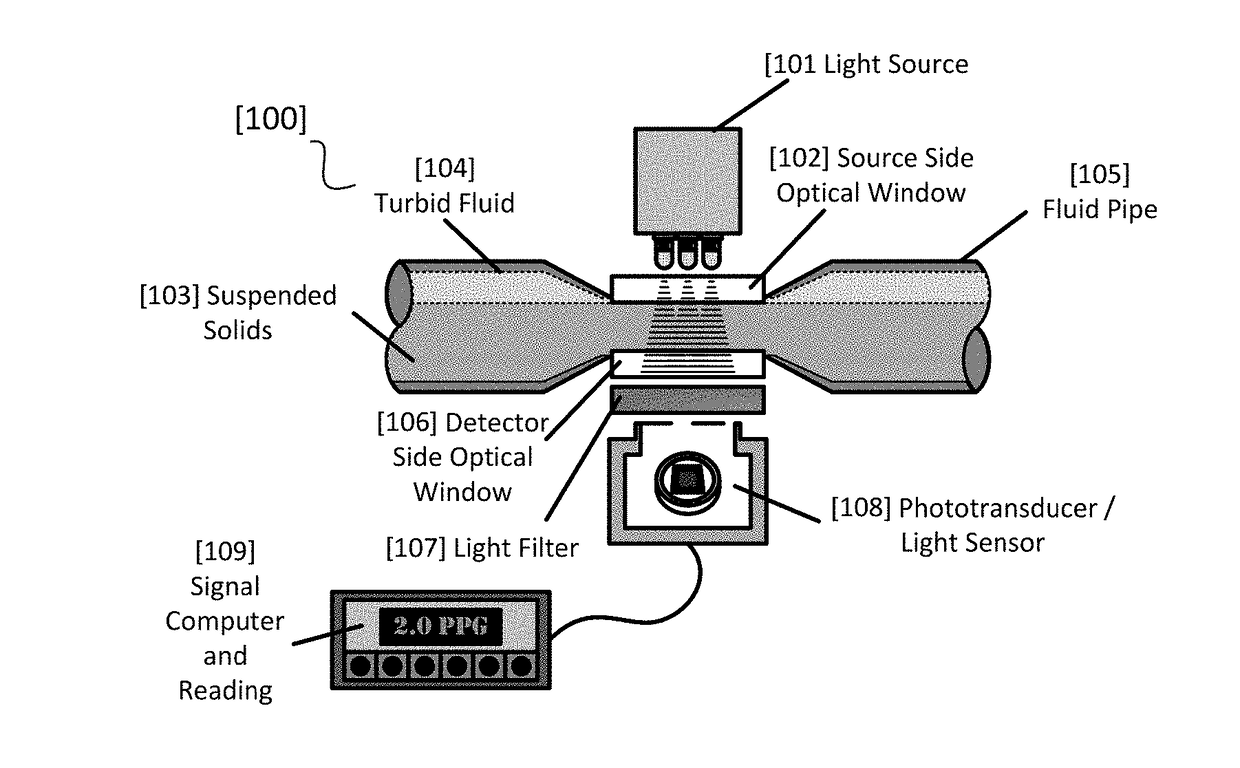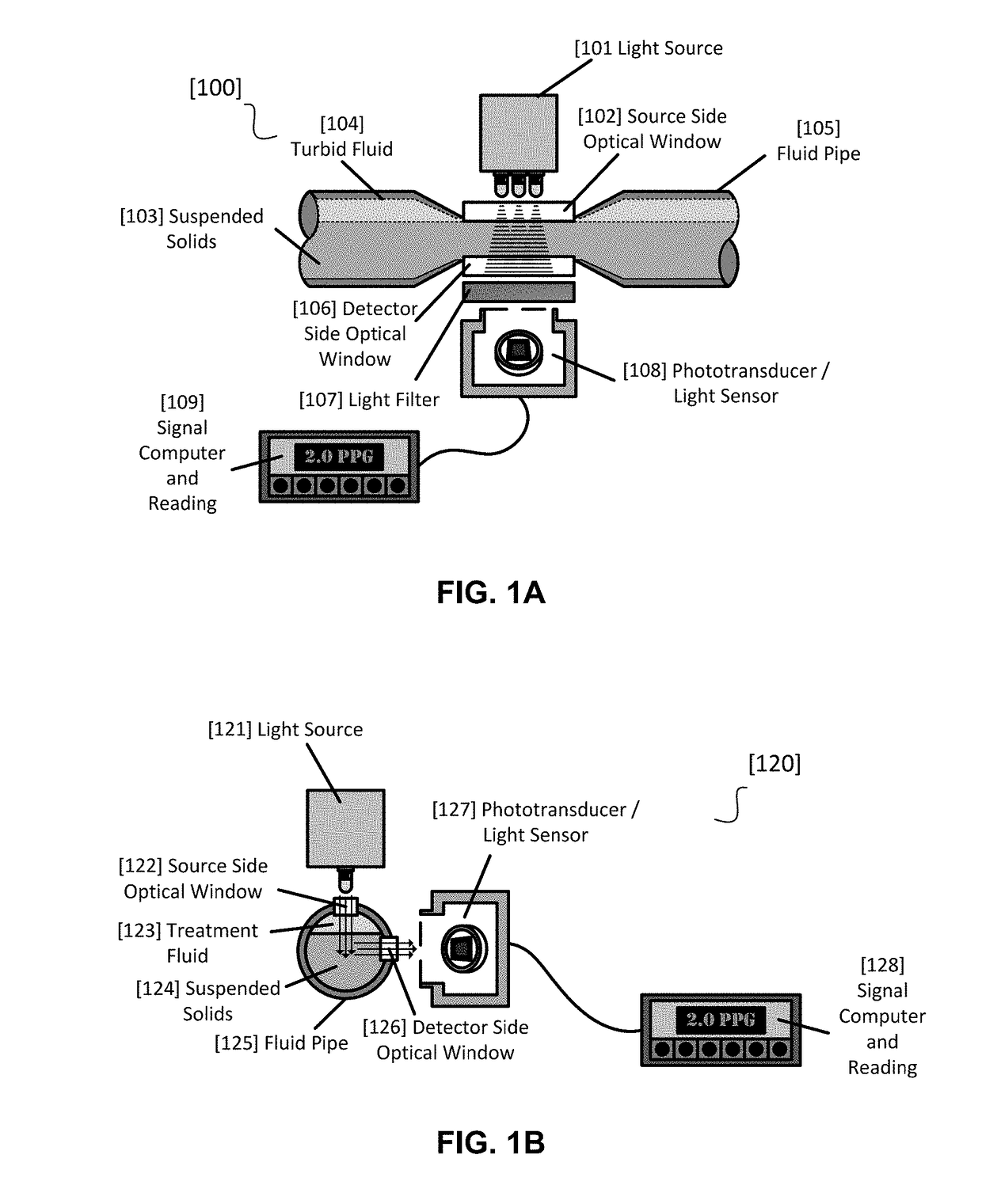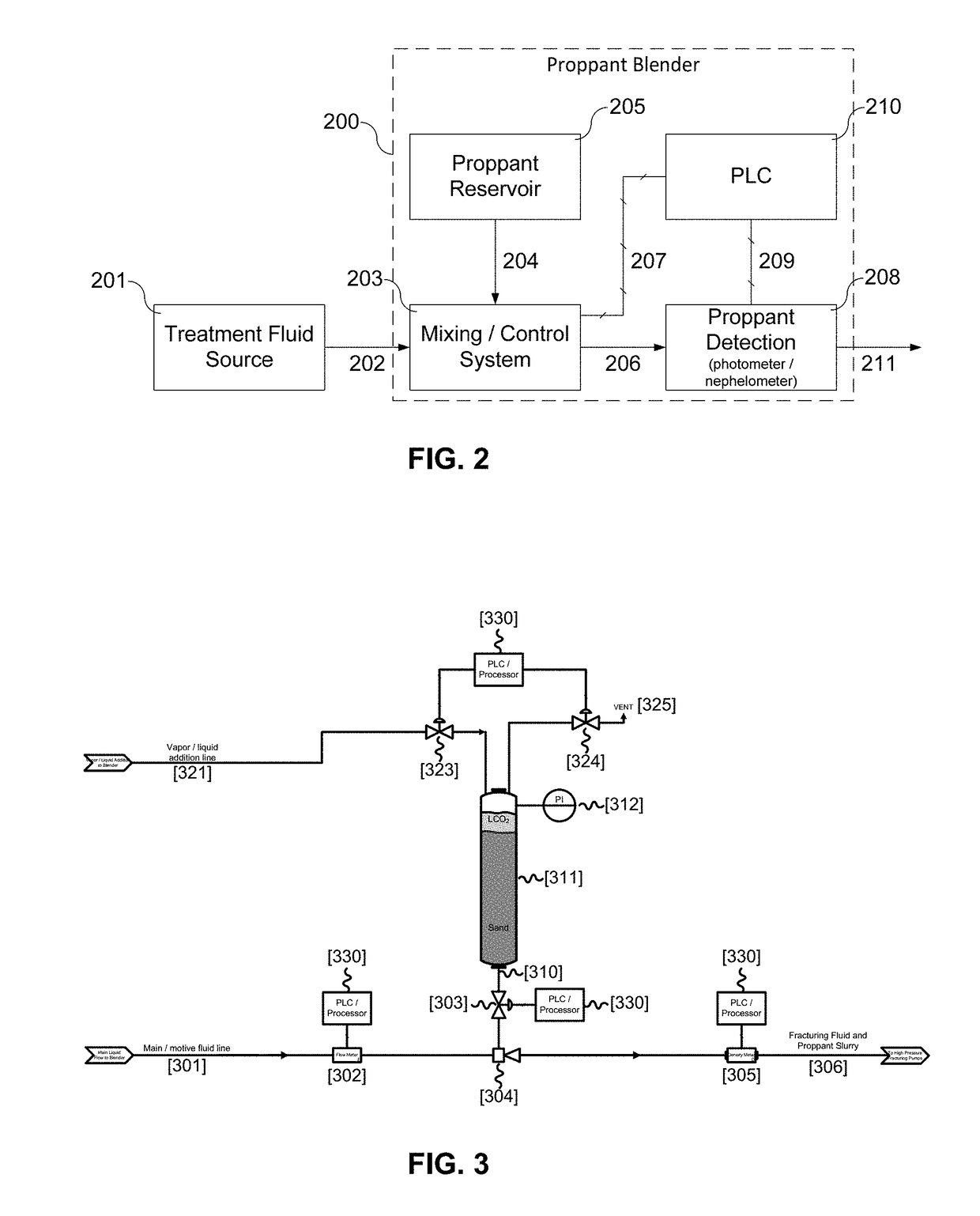Photometer/nephelometer device and method of using to determine proppant concentration
a technology of proppant concentration and photometer, which is applied in the direction of porous material analysis, porous material analysis, and well accessories, etc., can solve the problems of poor placement of proppant, limited proppant transport, and fractures of propagate in the reservoir matrix
- Summary
- Abstract
- Description
- Claims
- Application Information
AI Technical Summary
Benefits of technology
Problems solved by technology
Method used
Image
Examples
example
[0033]To demonstrate the efficacy for ultra-light weight proppant detection with NIR photometry, a laboratory experiment was set up using NIR emmiting LED's, a NIR sensitive phototransducer, and vials of suspended plastic ULW proppant. The vials contained various concentrations of ULWP from 0 to 1 ppa (or ˜2.5 ppa sand equivalent) with water as a suspension fluid. Specifically, four vials at concentrations of 0, 0.25, 0.5, and 1.0 ppa were prepared. The ULW proppant tested was a thermoplastic developed by Sun Drilling under the trade name FracBlack HT. The material has a specific gravity close to that of water and CO2, ˜1.054 or 8.8 lbs / gal.
[0034]A 850 nm monochromatic, NIR-emitting LED was selected to minimize the light interactions with the water in the vials. The transmission and scattering of light was measured using current generated from a photodiode. The current was measured with resistor shunt and voltmeter.
[0035]A vial of proppant free water (0 ppa) was used to calibrate re...
PUM
 Login to View More
Login to View More Abstract
Description
Claims
Application Information
 Login to View More
Login to View More - R&D
- Intellectual Property
- Life Sciences
- Materials
- Tech Scout
- Unparalleled Data Quality
- Higher Quality Content
- 60% Fewer Hallucinations
Browse by: Latest US Patents, China's latest patents, Technical Efficacy Thesaurus, Application Domain, Technology Topic, Popular Technical Reports.
© 2025 PatSnap. All rights reserved.Legal|Privacy policy|Modern Slavery Act Transparency Statement|Sitemap|About US| Contact US: help@patsnap.com



